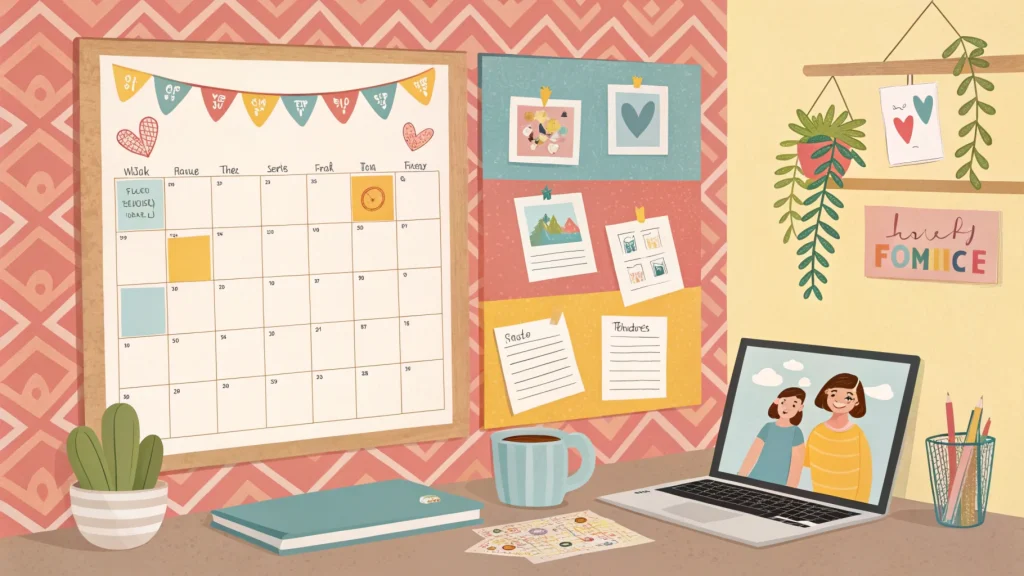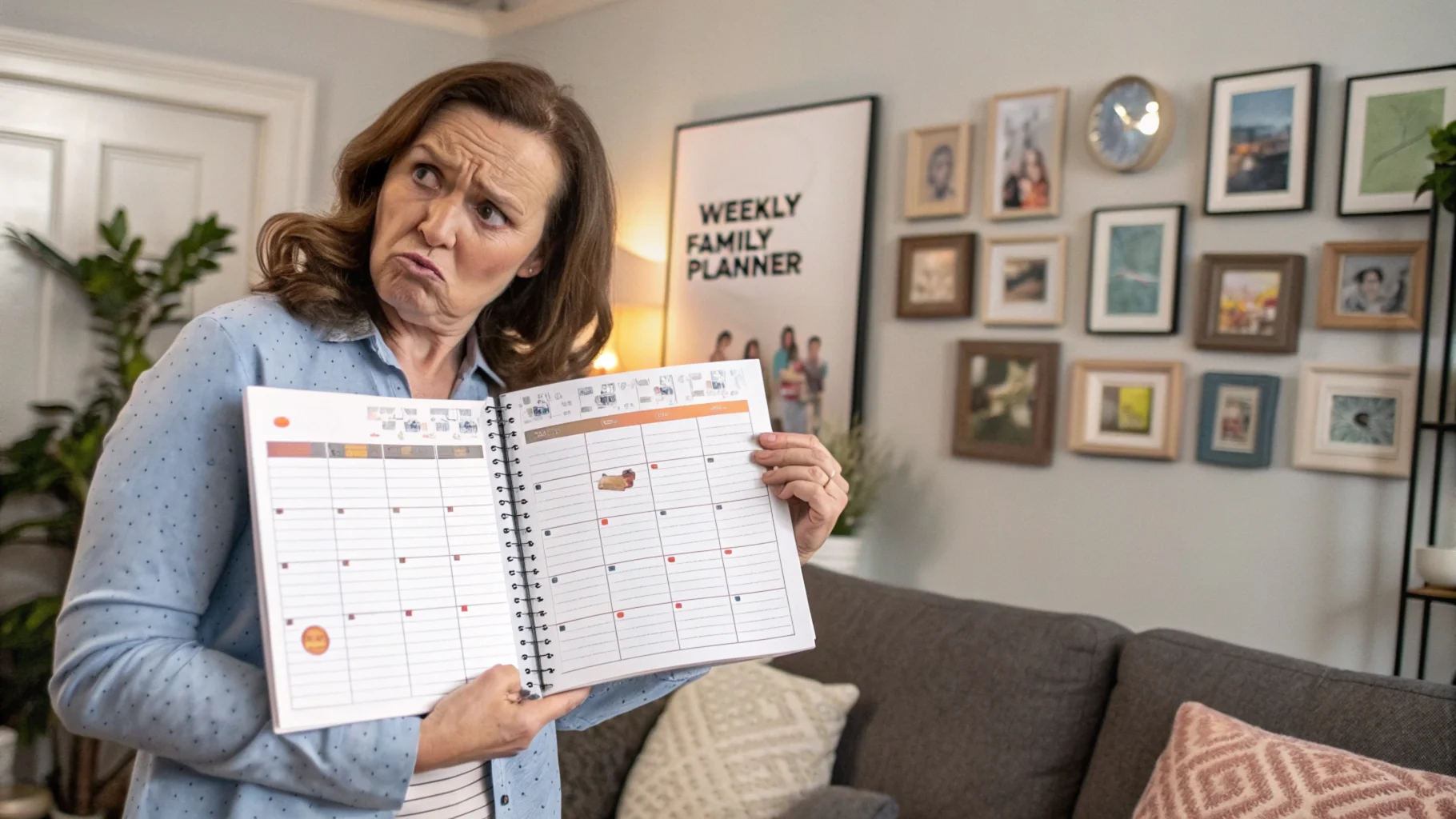Let me start with a confession: I used to be the kind of parent who thought I could wing it. Schedules? Planners? Nah, I had it all in my head. Or so I thought. Fast forward to a particularly chaotic Tuesday morning when I found myself scrambling to pack lunches, signing permission slips with one hand while brushing my toddler’s hair with the other, and realizing I’d forgotten it was “Crazy Sock Day” at school. Cue the meltdown—and not just from my kid. That was the day I decided enough was enough. Enter: the weekly family planner.
If you’re nodding along because this sounds all too familiar, you’re not alone. Life as a parent is a beautiful, messy whirlwind, and without a plan, it’s easy to feel like you’re constantly playing catch-up. But here’s the good news: a weekly family planner can be your game-changer. It’s not just a tool; it’s a lifeline. And today, I’m sharing everything I’ve learned about making it work for your family.
Why a Weekly Family Planner is a Parenting Must-Have
Let’s be real: parenting is a juggling act. Between school drop-offs, soccer practice, doctor’s appointments, work deadlines, and the never-ending laundry pile, it’s easy to feel overwhelmed. A weekly family planner helps you take control of the chaos by giving you a clear overview of what’s coming up.
For me, the planner became more than just a place to jot down appointments. It became a way to prioritize what matters most—family time, self-care, and those little moments that make life special. It’s not about being perfect; it’s about being intentional.
How to Create Your Weekly Family Planner
1. Choose Your Format
The first step is deciding what kind of planner works best for you. Are you a pen-and-paper person, or do you prefer a digital app? I’ve tried both, and here’s what I’ve learned:
- Physical Planners: There’s something satisfying about writing things down. Plus, it’s easy to stick on the fridge or kitchen counter where everyone can see it. My favorite is a big, colorful weekly calendar with plenty of space for notes.
- Digital Planners: If you’re always on the go, a digital planner might be your best bet. Apps like Google Calendar or Cozi let you color-code events, set reminders, and even share the calendar with your partner or older kids.
2. Involve the Whole Family
One of the best things I did was turn planning into a family activity. Every Sunday evening, we sit down together and go over the week ahead. My kids love adding their own activities (like “Pizza Night” or “Playdate with Emma”), and it helps them feel involved. Plus, it’s a great way to teach them about time management and responsibility.
3. Color-Code for Clarity
This might sound extra, but trust me, it’s a game-changer. Assign a color to each family member or category (e.g., blue for school, green for work, pink for extracurriculars). At a glance, you can see who’s doing what and when. It’s like a rainbow of organization!
What to Include in Your Weekly Family Planner

1. The Big Stuff: Appointments and Deadlines
Start by adding the non-negotiables: school events, doctor’s appointments, work meetings, and extracurricular activities. These are the backbone of your week, so get them in first.
2. Meal Planning Made Easy
If there’s one thing that used to stress me out, it was the daily “What’s for dinner?” question. Now, I dedicate a section of my planner to meal planning. On Sundays, I jot down dinner ideas for the week and make a grocery list. It saves time, money, and my sanity.
Pro tip: Keep a running list of your family’s favorite meals. When you’re stuck for ideas, just pick from the list!
3. Chores and Responsibilities
Let’s face it: chores are no one’s favorite, but they have to get done. Use your planner to assign tasks to each family member. For example, Mondays might be laundry day, while Fridays are for tidying up the living room. Rotate responsibilities to keep things fair (and to avoid the dreaded “But I did it last week!” argument).
4. Family Time and Self-Care
Here’s where the magic happens. Don’t forget to schedule time for fun and relaxation. Whether it’s a family movie night, a walk in the park, or an hour to read your favorite book, these moments are just as important as the rest.
My Favorite Weekly Family Planner Hacks
1. The “Buffer Zone”
Life happens, and things don’t always go according to plan. That’s why I always leave a little wiggle room in our schedule. If we have back-to-back activities, I try to build in a 15-minute buffer to account for traffic, meltdowns, or last-minute changes.
2. The “Done List”
At the end of each day, I write down three things we accomplished. It could be as simple as “Got the kids to school on time” or “Made a healthy dinner.” It’s a great way to celebrate the small wins and remind yourself that you’re doing a great job.
3. The “Family Command Center”
I turned a corner of our kitchen into a family command center. It’s where we keep the planner, a bulletin board for important papers, and a basket for keys and mail. It’s become the heart of our home and keeps everyone on the same page.
Overcoming Common Challenges
1. When Plans Fall Apart
Even with the best-laid plans, things don’t always go smoothly. Maybe your kid gets sick, or your boss calls an emergency meeting. When that happens, take a deep breath and remember: flexibility is key. Use your planner as a guide, not a rulebook.
2. Getting Everyone on Board
If your family is resistant to the idea of a planner, start small. Maybe begin with just meal planning or a shared calendar for appointments. Once they see how much easier life is with a plan, they’ll come around.
The Joy of a Well-Planned Week
Here’s the thing: a weekly family planner isn’t just about staying organized. It’s about creating space for what truly matters. It’s about fewer missed appointments, less stress, and more time for the things you love.
Since we started using a planner, I’ve noticed a huge difference in our family dynamic. Mornings are calmer, evenings are more relaxed, and we’re able to enjoy the little moments instead of rushing through them.
A Motivational Note to My Fellow Parents
If you’re feeling overwhelmed, take a deep breath. You’re doing an amazing job, even on the days when it doesn’t feel like it. A weekly family planner isn’t about being perfect; it’s about making life a little easier so you can focus on what really matters—your family.
Start small. Pick one thing to plan this week, whether it’s meals, chores, or just a special family activity. You’ll be amazed at how much of a difference it can make.
Final Thoughts
Parenting is a wild ride, but with a little planning, it doesn’t have to feel like a rollercoaster. A weekly family planner is your ticket to a more organized, intentional, and joyful life. So grab a planner, gather your family, and start planning your way to a calmer, happier week.
And remember: “The days are long, but the years are short.” Let’s make the most of them.
Ready to take the plunge? Share your favorite planning tips or your biggest parenting challenges in the comments below. Let’s build a community of organized, happy parents together!


